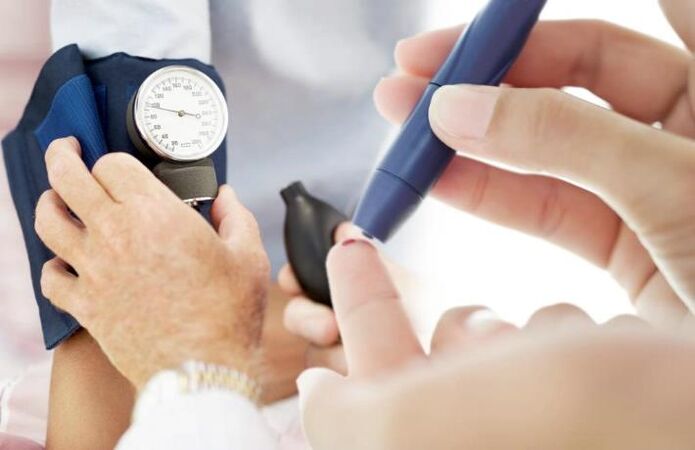There are several types and types of diabetes, each of which has its own characteristics and differences.
Along with the well-known names of the types of diabetes mellitus - type 1 and 2 - you can find other types of the disease, which are often dizzying. For example, it is not entirely clear what gestational diabetes mellitus is during pregnancy or lada diabetes. But what other types and types of diabetes are there?
Main types
Often, the terms "type 1 diabetes" or "type 2 diabetes" can be found in the formulation of the diagnosis. It is this classification that determines the disease according to the body's need for insulin.

Type 1 diabetes is characterized by the destruction of the special pancreatic beta cells responsible for insulin production. This most often happens when a person is exposed to a viral infection, as a result of which the immune system begins to produce "invaders" to the gland cells that destroy them. As a result, there is a lack of insulin in the blood. Because cells cannot absorb glucose from the blood without an important hormone like insulin, they are literally starving while "floating" on glucose.
If insulin enters the body from the outside, the cells will begin to consume glucose "with joy", the sugar level will normalize. Therefore, type 1 disease is also called insulin-dependent diabetes mellitus.
When the term "non-insulin-dependent diabetes" is used, it means type 2 diabetes. Its pathogenesis is based on two main points:
- pathology of beta cells;
- impairment of insulin sensitivity by insulin-dependent cells of the body.
This condition develops more often in obese people, because obesity causes the formation of insulin-resistant (immune) cells. In addition to obesity, the absorption of glucose is affected by smoking, lack of physical activity and taking certain medications.
Type 3 diabetes
There is type 3 diabetes, which combines the symptoms of type 1 and 2. Namely, accumulation of fatty tissue in the liver (as in type 2 diabetes) and insulin deficiency (as in type 1 diabetes). Type 2 diabetes that responds positively to insulin therapy in life is type 3. However, this type is not recognized by the health organization, so all cases are divided into types 1 and 2.
This disease is not rare. The reason is considered to be increased absorption of iodine in the intestine as a result of various pathologies. This leads to thyrotoxic type 2 diabetes, which has a complex pathogenesis. Treatment with it should be fundamentally different from standard therapy.
hidden form
Latent diabetes mellitus is a condition in which glucose from food is slowly absorbed, but insulin production remains adequate or high. Clinically latent diabetes does not manifest itself. This form precedes type 2 diabetes. It should be said that the latent variant of diabetes is pre-diabetes, at this stage it is still possible to influence the state of carbohydrate metabolism.
Latent diabetes can occur for a long time (up to several years). To recognize it in time, you need to monitor blood glucose often, which is especially important for people with predisposing factors (obesity, hypertension, and the use of diuretic drugs that reduce potassium levels, polycystic ovary syndrome).

If latent diabetes mellitus is detected in time, following simple prevention rules, this form will never turn into type 2 diabetes. To prevent this, you need to increase physical activity, maintain a diet, and control the level of glucose in the blood.
Labile and stable
You may also find a phrase like "stable and labile diabetes. "So they say about both type 1 diabetes and type 2. Understand the clinical course of the disease under these conditions.
Labile diabetes is characterized by a very severe and unpredictable course. During the day, the level of sugar in the blood changes dramatically, which does not allow choosing the optimal dose of insulin. With this form, acute and late complications occur more often - ketoacidosis, disorders of the kidneys, organs of vision. A competent form is characteristic of adolescence.
The stable form is characterized by a uniform course without a sudden drop in sugar, milder symptoms and low levels of hyperglycemia.
Pregnancy
Gestational diabetes is a form of diabetes that develops during pregnancy. Pregnancy or lat. gestatio is pregnancy. The causes of this type of disease have not been reliably determined, but the hormones produced by the placenta and the future mother's body cause physiological insulin resistance. There are certain factors that lead to the development of gestational diabetes. These include:
- late pregnancy;
- familial diabetes;
- to smoke;
- obesity;
- stillbirth in previous pregnancies.
If a woman follows the doctor's instructions, regularly takes tests, then such an unpleasant disease can be avoided. If diabetes develops, adequate insulin therapy and hospitalization are prescribed. The patient is monitored by obstetrician-gynecologist, endocrinologist, internist, ophthalmologist, neurologist. After childbirth, as a rule, carbohydrate metabolism returns to normal.

It should be noted that gestational diabetes can also be present after delivery. This diagnosis is valid for 2 months after birth. During this period, a woman should continue treatment, but with the adjustment of insulin doses calculated by the attending physician or endocrinologist. 2 months after childbirth, a woman undergoes a stress test that shows whether there is a violation of carbohydrate metabolism. If hyperglycemia is noted, the diagnosis is corrected and appropriate treatment is prescribed.
Lada diabetes
Latent diabetes mellitus or lada diabetes is rarely diagnosed due to its hidden course. Lada diabetes has features compared to other forms.
- Laboratory tests do not detect this form. Glucose levels often do not rise on an empty stomach.
- The first signs of the disease appear after 25 years.
- Pregnancy, stress, infectious diseases, rapid weight gain due to adipose tissue can cause clinical symptoms.
- Lada diabetes occurs most often in people who are not obese.
- The symptoms are similar to type 2 diabetes, but in a more subtle form.
- Markers of type 1 diabetes can be detected in the patient's blood.
- Lada diabetes is controlled by diet and taking hypoglycemic drugs.
Special tests are performed to determine Lada diabetes, which will be discussed in an article specifically dedicated to this condition.
Mody diabetes
Diabetes mellitus is rarely recognized, it is associated with the mutation of certain genes (there are 8 of them). These genes are responsible for the normal structure of insulin or the optimal development of beta cells. Mody's diabetes is characterized by a slow progression that develops in young people (more often in children, adolescents).
Among all patients with diabetes mellitus, fashionable diabetes accounts for 2-5% of cases, but the development of the gestational type is associated with specific genetic mutations. A reliable diagnosis of Mody diabetes is possible only with the help of molecular genetic studies.

Features of the flow of this form:
- occurs in children
- sometimes glucose rises to 8 mmol / l;
- lack of obesity;
- no insulin resistance;
- The SD is available in two generations;
- The course is the same as in type 2 diabetes.
steroid diabetes
Steroid diabetes develops with long-term use of corticosteroid-based drugs or hypercortisolism (syndrome or disease, Itsenko-Cushing). Adrenal hormones have a harmful effect on the beta cells of the pancreas, resulting in insulin deficiency.
Steroid diabetes mellitus is an insulin-dependent condition. However, its clinical course includes some features of type 1 and type 2 diabetes. In addition, as a result of the effect of corticoids, there is a violation of the work of other organs. This type of diabetes is treated as type 2 diabetes.
Pancreas
Pancreatic DM is a secondary disease. In pancreatitis, it develops as a response to the destruction of the pancreas, stones in the gallbladder and ducts, and after operations on the gland. All these factors lead to a decrease in active beta cells and insulin deficiency. It goes on like type 1 diabetes.
Other secondary forms
Adrenal, pituitary, thyroid diabetes occurs against the background of an excessive amount of certain hormones in the blood, which causes the destruction of insulin-producing cells. The clinic is similar to type 1 diabetes with signs of damage to other organs and tissues.

























